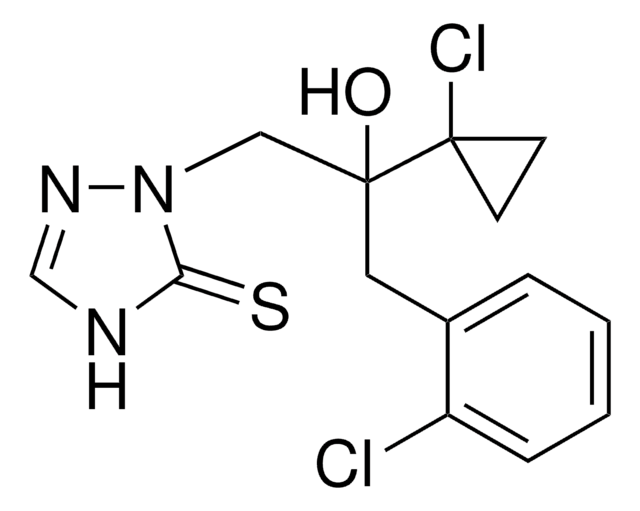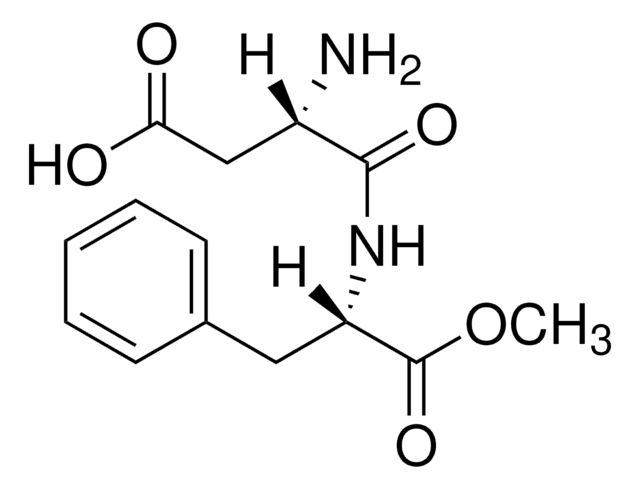Wichtige Dokumente
47134
Acesulfam K
Synonym(e):
6-Methyl-1,2,3-oxathiazin-4(3H)-on-2,2-dioxid Kaliumsalz
About This Item
Empfohlene Produkte
Qualität
analytical standard
Analysenzertifikat (CofA)
current certificate can be downloaded
Methode(n)
HPLC: suitable
gas chromatography (GC): suitable
Anwendung(en)
cleaning products
cosmetics
food and beverages
personal care
Format
neat
Lagertemp.
2-30°C
SMILES String
[K+].CC1=CC(=O)[N-]S(=O)(=O)O1
InChI
1S/C4H5NO4S.K/c1-3-2-4(6)5-10(7,8)9-3;/h2H,1H3,(H,5,6);/q;+1/p-1
InChIKey
WBZFUFAFFUEMEI-UHFFFAOYSA-M
Suchen Sie nach ähnlichen Produkten? Aufrufen Leitfaden zum Produktvergleich
Anwendung
Lagerklassenschlüssel
13 - Non Combustible Solids
WGK
WGK 1
Flammpunkt (°F)
Not applicable
Flammpunkt (°C)
Not applicable
Persönliche Schutzausrüstung
Eyeshields, Gloves, type N95 (US)
Hier finden Sie alle aktuellen Versionen:
Besitzen Sie dieses Produkt bereits?
In der Dokumentenbibliothek finden Sie die Dokumentation zu den Produkten, die Sie kürzlich erworben haben.
Kunden haben sich ebenfalls angesehen
Unser Team von Wissenschaftlern verfügt über Erfahrung in allen Forschungsbereichen einschließlich Life Science, Materialwissenschaften, chemischer Synthese, Chromatographie, Analytik und vielen mehr..
Setzen Sie sich mit dem technischen Dienst in Verbindung.
